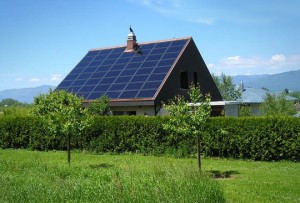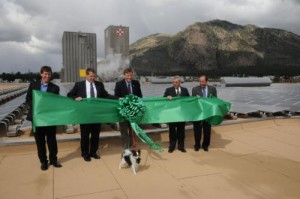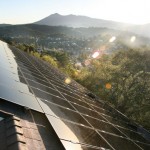 “PG&E is pleased to support our customers’ choice to go solar so they can realize the benefits of solar energy for their homes and businesses,” said Helen Burt, Senior Vice President of Customer Care for PG&E. “We remain committed to providing our customers with clean, reliable, and affordable energy, including an increasing amount of power from large utility-driven solar projects.”A new survey by the Solar Electric Power Association (SEPA) ranks Pacific Gas and Electric Company (PG&E) as the nation’s top electric utility in the amount of solar power added to its system in 2011. PG&E is first in the Annual Solar Megawatts category of the more than 240 utilities that participated in SEPA’s 2011 Utility Solar Rankings survey.
“PG&E is pleased to support our customers’ choice to go solar so they can realize the benefits of solar energy for their homes and businesses,” said Helen Burt, Senior Vice President of Customer Care for PG&E. “We remain committed to providing our customers with clean, reliable, and affordable energy, including an increasing amount of power from large utility-driven solar projects.”A new survey by the Solar Electric Power Association (SEPA) ranks Pacific Gas and Electric Company (PG&E) as the nation’s top electric utility in the amount of solar power added to its system in 2011. PG&E is first in the Annual Solar Megawatts category of the more than 240 utilities that participated in SEPA’s 2011 Utility Solar Rankings survey.
“We congratulate PG&E for being a solar power leader in the electric utility sector,” said Julia Hamm, President and CEO of SEPA. “PG&E successfully adapted its business models and operations to allow for a significant amount of solar energy to be integrated into the grid last year, delivering the many benefits of clean solar energy to its customers. The impressive gains solar energy made in the U.S. in 2011 can be largely attributed to PG&E’s leadership.”
 PG&E delivers some of the nation’s cleanest electric power to its customers, thanks in part to solar energy. On average, more than half the electricity the utility delivers comes from sources that are renewable and/or carbon free. PG&E helped more than 12,000 customers in Northern and Central California connect 162 megawatts (MW) of solar at their homes and business in 2011, bringing the total number of customer solar installations to more than 63,000. It also connected 135 MW of new large solar projects for the benefit of all customers. This includes PG&E’s own expanding solar facilities, which when completed will deliver 250 MW of clean energy — enough to power about 150,000 average customer homes.
PG&E delivers some of the nation’s cleanest electric power to its customers, thanks in part to solar energy. On average, more than half the electricity the utility delivers comes from sources that are renewable and/or carbon free. PG&E helped more than 12,000 customers in Northern and Central California connect 162 megawatts (MW) of solar at their homes and business in 2011, bringing the total number of customer solar installations to more than 63,000. It also connected 135 MW of new large solar projects for the benefit of all customers. This includes PG&E’s own expanding solar facilities, which when completed will deliver 250 MW of clean energy — enough to power about 150,000 average customer homes.







